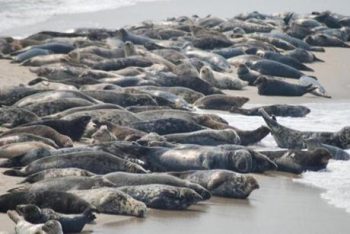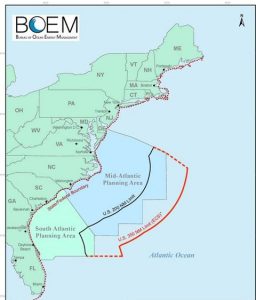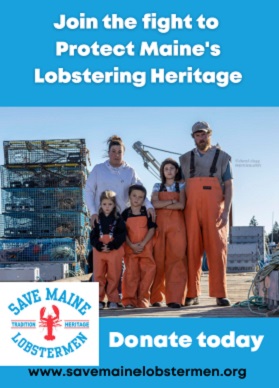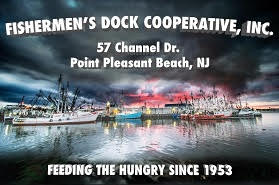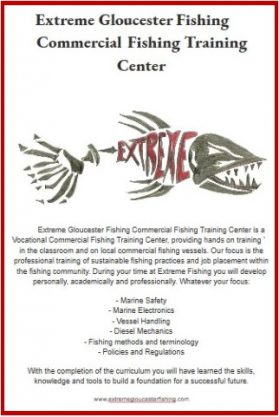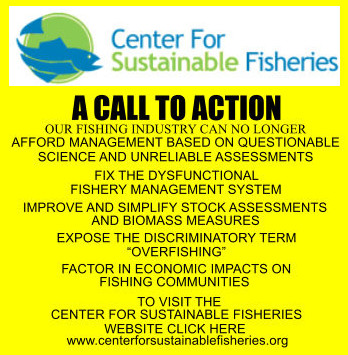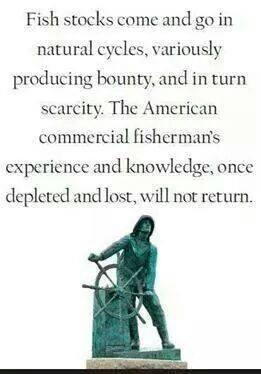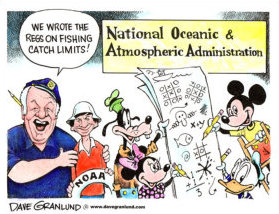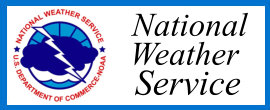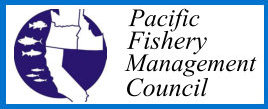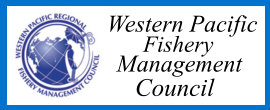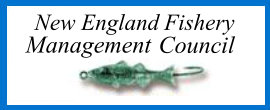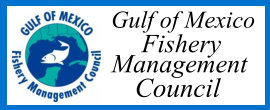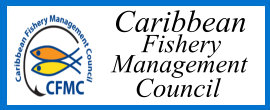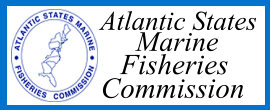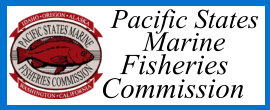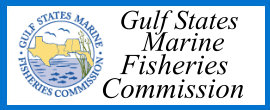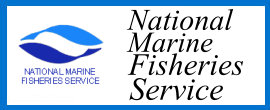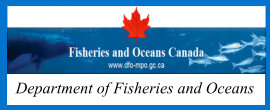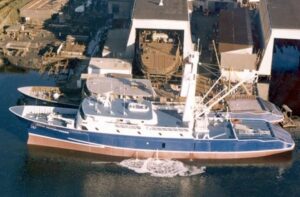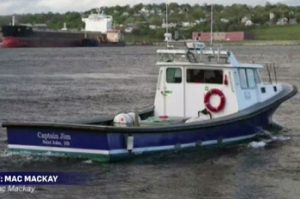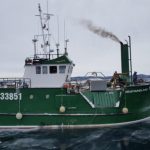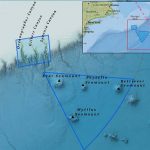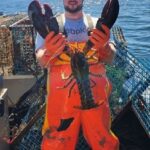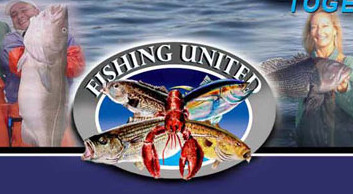Tag Archives: marine-mammal-protection-act
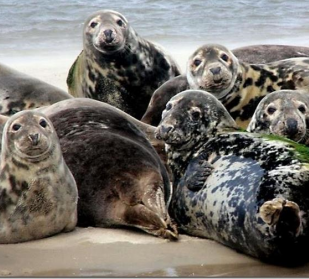
Great white sharks not the only threat gray seals bring – Here’s Why.
Over the winter, gray seals have — thanks in large measure to the protection afforded by the Marine Mammal Protection Act — further augmented their numbers. The “gray seal buffet” is once again open for business. But this season is, of course, unlike any in recent times. For the Cape and Islands, the coronavirus poses a far greater threat to the safety of its beachgoers and well-being of its economy than white sharks. But those threats are not necessarily unrelated. Here’s why. The Marine Mammal Protection Act is distinctive in that it not only protects all marine mammals, it protects them in perpetuity, regardless of their numbers and impact on co-existing species, including humans. Let me hasten to acknowledge that the act was necessary and appropriate when it was passed almost 50 years ago and remains so in most respects. Because it protects marine mammals permanently, it in effect relies on nature to take its course in controlling marine mammal populations and finding an appropriate balance among competing and coexisting marine species. >click to read< 09:06
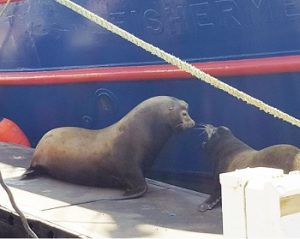
Yaquina Bay: California Sea Lion breeding season is heating up!
As their breeding season approaches, the mostly male sea lions of Yaquina Bay are growing hormonal and more aggressive as they prepare to head south for courtship. The pinnipeds that crowd the docks of Newport’s harbor are California sea lions. The typical adult male is close to 8 feet long and weighs between 700 pounds and a half ton, while adult females are usually 6 feet long and weigh less than half as much. The Steller sea lion is also found in the area but tends to stay away from harbors, favoring to haul out on sea rocks and buoys offshore.,,, The Marine Mammal Protection Act makes it illegal to hunt, capture, kill or harass sea lions, with limited exceptions for the deterrent hazing of individual nuisance animals. >click to read< 12:01
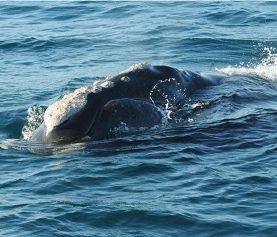
Ruling in whale case signals turmoil for lobster industry
It is too early to know exactly how the ruling in a lawsuit brought by a group of environmental organizations will affect the lobster industry. U.S. District Court Judge James Boasberg asked those groups and NOAA to file briefs suggesting an appropriate “injunctive remedy” against further violations of the Endangered Species Act. Whatever that remedy may be, it is likely to come soon and have a significant impact on Maine lobstermen. During the past several months, Department of Marine Resources Commissioner Patrick Keliher hosted a series of meetings along the coast with members of the lobster industry,, Throughout the process, Keliher warned that the pending federal lawsuit against NOAA was a “wild card” that could affect the regulatory process in undetermined ways. Last week, Keliher said that with the release of the court’s decision the wild card had been played. >click to read< 17:51
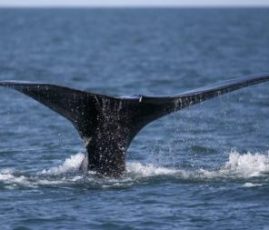
Scoping Hearing on Lobster/Gear Right Whale Entanglements
On Tuesday night there will be a scoping meeting from 6-8 PM at Mass Maritime Academy to receive public input on ways to alter the American lobster fishery regulations to reduce mortality of North Atlantic right whales by 60%. This is a followup to the August 21, 2019 NOAA Fisheries GARFO (Greater Atlantic Regional Fisheries Office) public meeting in Bourne that sought input on the recommendations from the Atlantic Large Whale Take Reduction Team,, >click to read< 20:29
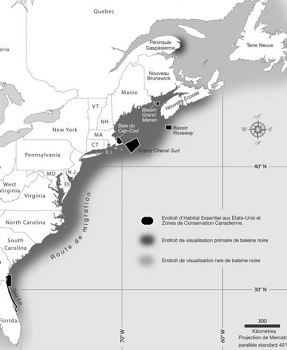
US elected officials discuss Canadian crab embargo
In a letter to Commerce Secretary Wilbur Ross, a member of President Donald Trump’s Cabinet, four elected officials from Maine stand up for their state’s lobster fishing industry. They argue that measures to protect the North Atlantic right whale imposed on American fishermen for several years have saved the species from extinction, but also increased its population. However, they add, the mortality of right whales “directly related” to commercial shipping and fishing activities in Canadian waters “continues to increase”. A total of 12 right whales died in the Gulf of St. Lawrence in 2017 and at least 9 in 2019, out of a population of around 400 individuals. >click to read<14:13
Des élus américains évoquent un embargo sur le crabe canadien – >click to read<
Most likely Carnival Cruise Lines is responsible for 18+ Right Whale deaths in the past 3 year, at which rate they would soon be extinct. – >click to read<
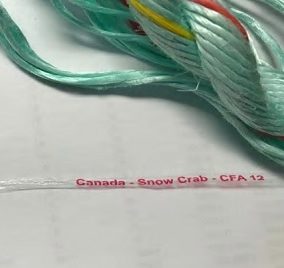
Canada imposing mandatory gear marking for lobster, and crab fisheries in 2020
Specially coloured rope will become mandatory with the start of the season in every lobster and crab fishery in Eastern Canada. The rope must identify the region, species being fished and individual fishing area. The requirement is also intended to maintain access to the United States seafood market by demonstrating Canada has rules comparable to those in place for American fishermen. >click to read< 07:20

Letter to the Editor: (and the rest of the world) Urging Action on Seal Population Control
The exploding seal population is a consequence of the federal Marine Mammal Protection Act, which allowed for the rapidly growing seal overpopulation. Seals attract great white sharks, which feed upon them and ferociously attack humans. We once had a thriving fishing industry, kept healthy in part by a bounty system of predator control. That ended in 1972 with the passage of the protection act, which not only lifted the bounties on fish-eating predators like seals, but placed them under perpetual protection, immune from mitigation. Now fully recovered, the seal population has grown beyond what any reasonable person would consider healthy. Ron Beaty >click to read< 07:15
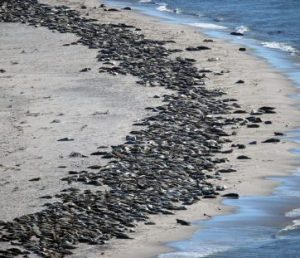
“Human Dimension of Rebounding Population of Seals and White Sharks on Cape Cod.” Study targets public’s views about seals
“We want to bring different perspectives together to see what people value about Cape Cod, see what they understand about the marine ecosystem and the interactions within it,” said George Maynard, research coordinator at the Cape Cod Commercial Fishermen’s Alliance, one of the collaborating organizations. “Seals are one piece in an increasingly complicated environment.” Jennifer Jackman, a professor of political science at Salem State University, is leading the study, “Human Dimension of Rebounding Population of Seals and White Sharks on Cape Cod.” >click to read< 13:12
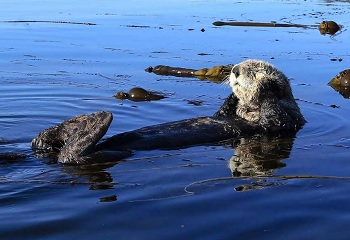
As the marine mammal takes a bite out of the fishing industry, A modest proposal for hunting sea otters
Phil Doherty doesn’t think sea otters are cute. Sure, he can see why tourists might get a kick out of watching the fuzzy critters reclining in waves with clams on their bellies, fixing to chow down. But to Doherty, co-director of the Southeast Alaska Regional Dive Fisheries Association and the commercial fisherman he represents, those cuddly otters are eating their bottom line. >click to read< 15:07
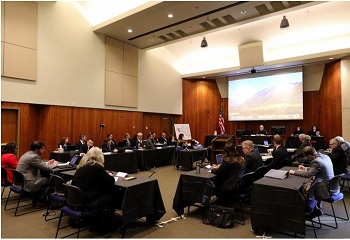
NOAA Argues to Allow Makah Tribe to Hunt Gray Whales off Washington Again
More than two decades ago, Makah tribal members killed a 30-foot gray whale in the waters off the Olympic Peninsula amid bitter protests from animal-welfare activists. The tribal hunt in May 1999 touched off a protracted legal battle that on Thursday took center stage inside a Seattle federal building. The proceedings over the tribe’s treaty right to hunt gray whales are expected to last more than a week in the courtroom-like setting. >click to read< 23:12

Solutions sought to ease conflicts over Southeast Alaska’s rising sea otter populations
A hundred years ago, the fur trade wiped out sea otters in Southeast Alaska. They were reintroduced in the 1960s with 412 animals brought from Amchitka Island and Prince William Sound. Since then, they’ve done really well. The last official estimate in 2012 shows that there are more than 25,000 of them. But their success has changed their environment as they’re a keystone species. “Many of those effects are really disruptive to the existing, you know, commercial activities like shell fisheries that have developed.” >click to read< 07:57

Lobstermen Question State Whale Plan at Waldoboro Meeting
Lobstermen expressed a mix of frustration and acceptance upon hearing the state’s new plan to protect North American right whales during a meeting in Waldoboro on Tuesday, Nov. 5. Maine Department of Marine Resources Commissioner Patrick Keliher presented the state’s proposed gear rules and fielded questions in the Medomak Middle School gymnasium. Photo’s >click to read< 09:55

NOAA Seeks Nominations for Scientific Review Groups under the Marine Mammal Protection Act
NOAA Fisheries will publish a Federal Register Notice on Monday, August 19, 2019, soliciting nominations to three independent marine mammal scientific review groups (SRG). We would like your assistance to identify qualified candidates. The three independent regional SRGs, covering Alaska, the Atlantic (including the Gulf of Mexico), and the Pacific (including Hawaii), were established under section 117(d) of the Marine Mammal Protection Act to provide advice on a range of marine mammal science and management issues. >click to read< 16:27
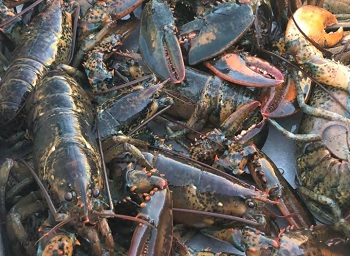
With billions at stake, Canada to show U.S. its fisheries protect whales
In an effort to maintain access to the lucrative U.S. seafood market, Canada will submit a “progress report” to Washington outlining steps to protect whales and other marine mammals that interact with more than 200 Canadian fisheries. The submission will be the first test of Canada’s ability to meet upcoming requirements in the United States Marine Mammal Protection Act (MMPA), and comes as three critically endangered North Atlantic right whales are believed entangled in fishing gear in Canadian waters. Efforts to free them are set for Tuesday, a day after Canada announced additional measures to protect North Atlantic right whales. >click to read<08:37
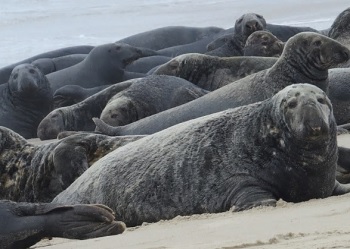
Virtual Interview with “Acoustic Dome” Team – would repel seals with sound waves, hopefully sharks would follow…
Concern is growing in the tourism industry that the party might be over for Cape Cod beaches if the local seal population – and thus the shark population – continues to grow. A growing population of seals – the sharks’ primary food source – appears to be drawing ever more sharks into our waters. Earlier this year an “acoustic dome” concept was floated by two Cape Cod men.,,,The gray seals are the “problem” and the solution. Few are quick to realize that the great white sharks are simply a symptom. Prior to the passage of the Marine Mammal Protection Act (MMPA) in 1972 the siting of a gray seal in Cape Cod waters was a rare event. (now an estimated 50,000 in Cape waters.) >click to read<08:55
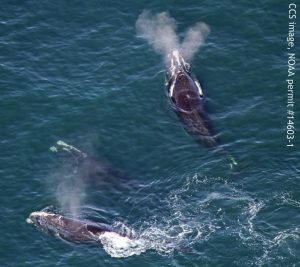
NOAA Team Reaches Consensus on Right Whale Survival Measures
“This is hard work. The Team members brought not only their expertise but also their passion for the people and communities they represent to the table. Everyone understands that there are real and difficult consequences to fishermen as a result of the choices made in this room,” said Sam Rauch, NOAA Fisheries deputy assistant administrator for regulatory programs.,,, The group will meet in Providence, Rhode Island for four days. At the end of the meeting, they hope to agree on a suite of measures that will reduce right whale serious injuries and deaths in fishing gear in U.S. waters from Maine to Florida to less than one whale per year, the level prescribed by the Marine Mammal Protection Act. >click to read<09:15
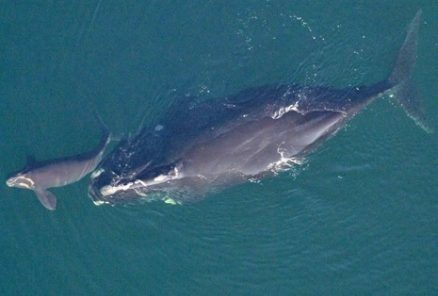
Atlantic Large Whale Take Reduction Team to Focus on Right Whale Survival This Week
On April 23, a group of approximately 60 fishermen, scientists, conservationists, and state and federal officials will come together to discuss ways to further reduce serious injury and mortality of endangered North Atlantic right whales caused by trap/pot fishing gear. The group will meet in Providence, Rhode Island for four days. At the end of the meeting, they hope to agree on a suite of measures that will reduce right whale serious injuries and deaths in fishing gear in U.S. waters from Maine to Florida to less than one whale per year, the level prescribed by the Marine Mammal Protection Act. >click to read<10:01

Congress passes bill that will allow killing of sea lions to help salmon
Congress has agreed to make it easier to kill sea lions threatening fragile runs of salmon in the Northwest. Oregon Public Broadcasting reports that a bill approved by the House Tuesday changes the Marine Mammal Protection Act to lift some of the restrictions on killing sea lions to protect salmon and steelhead in the Columbia River and its tributaries. The measure had previously passed the Senate. Wildlife managers say sea lion populations have grown so large that they no longer need all the protections that were put in place for them in 1972. >click to read<10:14
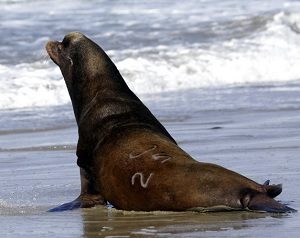
Senate Bill 3119 – Senate passes bill making it easier to kill sea lions
A bill that would make it easier to kill sea lions that feast on imperiled salmon in the Columbia River has cleared the U.S. Senate. State wildlife managers say rebounding numbers of sea lions are eating more salmon than ever and their appetites are undermining billions of dollars of investments to restore endangered fish runs. Senate Bill 3119, which passed Thursday by unanimous consent, would streamline the process for Washington, Idaho, Oregon and several Pacific Northwest Native American tribes to capture and euthanize potentially hundreds of sea lions found in the river east of Portland, Oregon. >click to read<09:17

Fisheries minister meets with stakeholders to discuss right whale protections
The federal fisheries minister met with fishermen, industry representatives and marine scientists Tuesday to discuss the impact of restrictions put in place to protect North Atlantic right whales and whether they may be needed for the coming fishing seasons. Jonathan Wilkinson sat down with dozens of stakeholders at a hotel in Dartmouth, N.S., to discuss measures introduced earlier this year that were aimed at shielding the marine mammals against fishing gear entanglements and ship strikes — their greatest threats. >click to read<13:31
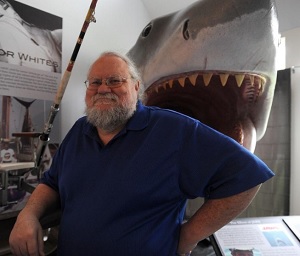
Cape Cod: Expert says sharks, seals here to stay
Last year, George Burgess predicted that a fatal shark attack would occur on Cape Cod within five years. “It’s the combination of a large predator, and the things they eat, both gaining in population size and both coming back to lay claim to areas that historically were theirs 150 years ago,” Burgess, now retired after 40 years as a shark researcher and curator, was on the Cape last week to gather information for the shark attack file on the region’s two shark attacks this summer, including one that resulted in the death of 26-year-old boogie boarder Arthur Medici. Burgess stressed his concern over the loss of life and his sympathy for the victim and his family, but said the Cape has now turned a corner,,, >click to read<11:09
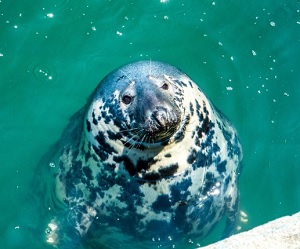
A Provincetown fisherman’s appraisal of the great white dilemma
It finally happened: two worlds collided. The great white shark world collided with the human world and the result was a man being bitten at Longnook Beach. We’re thankful he was saved and is recovering. But how did we get here? It started in 1972 with the Marine Mammal Protection Act, which prohibits hunting or harassing marine mammals, including seals. Before this law fishing communities hunted seals for their pelts and to manage the herd, because they eat enough fish to threaten the livelihoods of commercial fishermen. There were actually payments made by fishing towns to anyone who brought in a seal nose. The threat to commercial fishing was seen as very real. With the 1972 law, the hunt was stopped and seals began reproducing at a far greater rate than was expected. >click to read<11:55

The fisherman and the government observer – Tuna by the ton: two tales of fishing
Tom Crivello is a tuna boat captain and owner of two large seiners, both of which carry helicopters that are used in hunting for tuna. Crivello’s two boats are the Rose Ann Marie, which is 220 feet long with a capacity of 1050 tons of fish, and the Marla Marie, which is 151 feet long and holds about 500 tons. They are both registered in the U.S. and are based in San Diego, along with about 125 other boats from the American tuna fleet of nearly 140 boats. About a year ago, after fishing for twenty-one years — since the age of sixteen — Crivello decided to retire and try to sell the Rose Ann Marie, which is valued at about five million dollars. He was feeling the effects of relentless pressure and he was determined to do something about it while he still was capable. Others had reached the limit, pressed on, and ended up with drinking problems or even nervous breakdowns. >click to read< 8 pages from May 13, 1982 18:35

Seals were once nearly wiped out from the Gulf of Maine.
At any given time, approximately 600 seals splash, bathe and feed around a modest mass of rocks six miles off the coast of Maine, the northernmost of the Isles of Shoals. These seals, both gray and harbor species, have made a resurgence in local waters over the last two decades following the imperative enaction of federal protections. Prior to the 1970s, the species had essentially been extirpated in Maine and Massachusetts, after being hunted for their pelts, and killed as competition for fish, said Jennifer Seavey, executive director of Shoals Marine Laboratory on Appledore Island, a joint program between the University of New Hampshire and Cornell University. >click to read<09:38
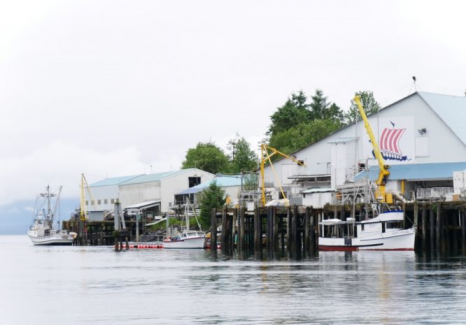
Optimism scarce as commercial fisheries start up in Southeast
Activity is picking up in the harbors in Petersburg this week as fishing boats and tenders prepare for the start of several commercial fishing seasons, but optimism is a little scarce on the docks. Fishermen this summer are feeling the impacts of reduced catches, low forecasts and increasing competition from marine mammals. In South Harbor, Charlie Christensen is readying the Erika Ann for some tendering work in the early summer. Then he’ll switch over to seining once pink salmon start coming in. He has a long list of bad news for his fishing season, stretching back to management decisions by the Alaska Department of Fish and Game for golden or brown king crab. He also points to whale predation on black cod,,, >click to read< 17:22
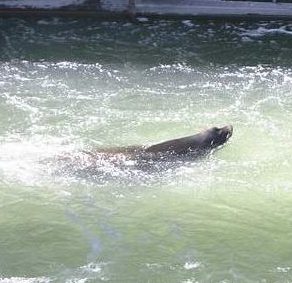
Sea lions continue to eat endangered fish
All the time, money and sacrifice to improve salmon and steelhead passage in the Willamette River won’t mean a thing unless wildlife managers can get rid of sea lions feasting on the fish at Willamette Falls. That was the message Tuesday from Shaun Clements, senior policy adviser for the Oregon Department of Fish and Wildlife, who met at the falls with Liz Hamilton, executive director of the Northwest Sportfishing Industry Association, and Suzanne Kunse, district director for U.S. Rep. Kurt Schrader, D-Ore. >click to read<17:51







